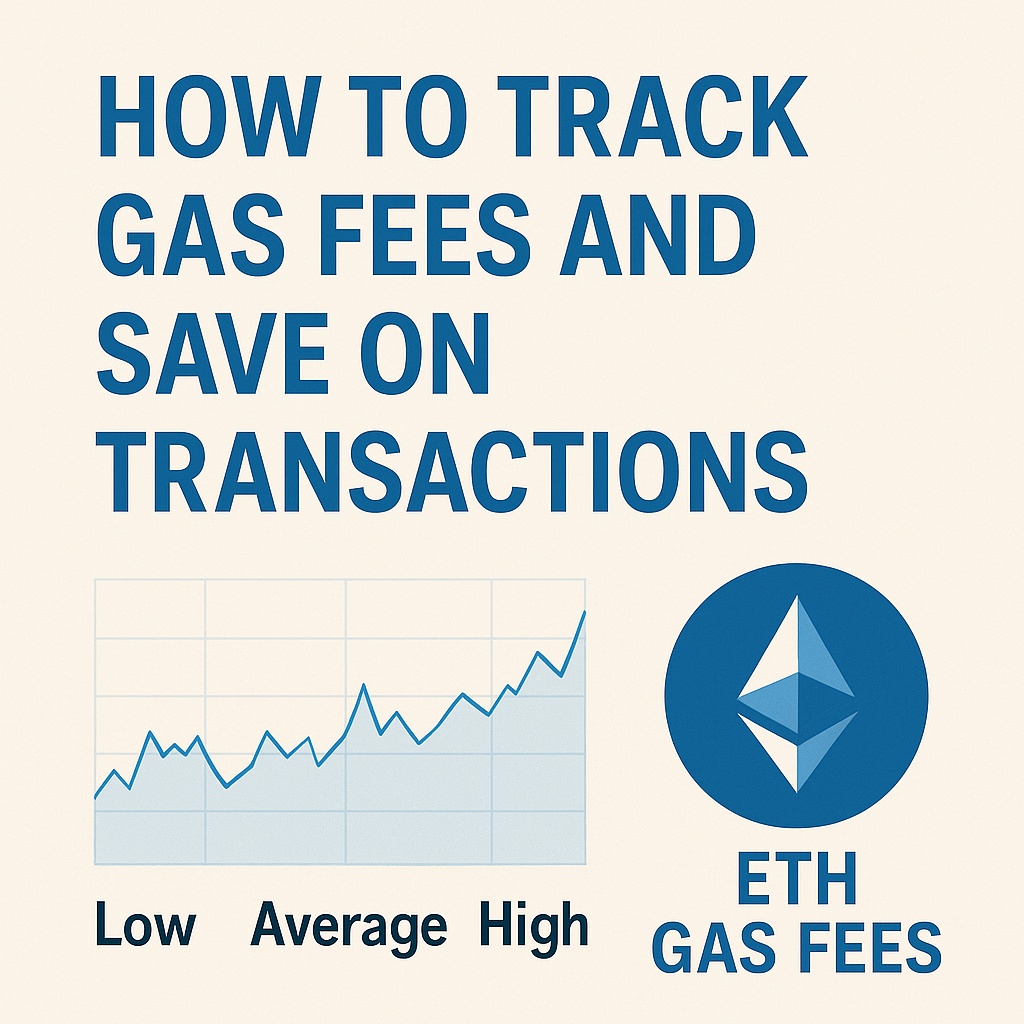⛽ ETH Gas Fees in 2025: How to Track and Save on Every Transaction

Whether you're swapping tokens on Uniswap, minting NFTs, or bridging assets across chains, eth gas fees can catch you off guard. In 2025, understanding how to manage your eth gas fee isn't optional — it's essential.
This guide breaks down:
How to monitor live gas fees
Which tools to use to reduce your eth fee
When and how to calculate the gas fee for ETH
Common questions answered in simple terms
Let’s help you spend less and save more in every Ethereum transaction.
🔍 What Are ETH Gas Fees?
Every Ethereum transaction — whether sending ETH, using DeFi apps, or minting an NFT — uses computing power measured in gas. The eth gas fee is what you pay to process that transaction.
Formula:
Gas Fee = Gas Units × Gas Price (in Gwei)
The higher the demand on the network, the higher the gas fees rise.
📈 Best Tools to Track Gas Fees in Real Time
Here are the most reliable tools to track eth gas fees before confirming your transaction:
| Tool | Highlights |
|---|---|
| Etherscan Gas Tracker | Shows Low, Avg, High gas prices and estimated fees |
| TxStreet | Visual real-time gas congestion map |
| GasNow | Forecast and alert integration (Telegram/Discord) |
| MetaMask | Built-in gas estimation during transactions |
🧠 People Also Ask (FAQs)
❓How do I check my crypto gas fees?
You can:
Use Etherscan Gas Tracker for real-time data
Check estimated gas fees in wallets like MetaMask
View confirmed gas costs on Etherscan after the transaction
Track fee history via ETH Gas Station or Zapper
❓How to minimize gas fees?
To reduce your eth gas fee, follow these tips:
Transact during low-demand times (1–6 AM UTC, weekends)
Use Layer 2 solutions (Arbitrum, Optimism, zkSync)
Choose gas-optimized dApps (e.g., 1inch, CowSwap)
Set manual gas limits in MetaMask Advanced Settings
Batch actions to reduce approvals and transaction count
❓How to calculate gas for a transaction?
Use this formula:
Gas Fee = Gas Units × Gas Price ÷ 1,000,000,000 × ETH Price
Example:
Gas Used: 21,000
Gas Price: 30 Gwei
ETH Price: $3,000
→ Gas Fee ≈ $1.89
Tools like Debank, CoinTool, or MetaMask calculate this in real time.
💡 When Are ETH Gas Fees Lowest?
| Time (UTC) | Why It's Cheaper |
|---|---|
| 1 AM – 6 AM | U.S. & EU users offline |
| Weekends | Less institutional traffic |
| Post-market dips | Lower demand = lower gas prices |
👉 Plan big swaps, mints, and bridge activity during these windows.
🛠 Tools to Save on Gas Fees
| Tool | Use Case |
|---|---|
| 1inch | Includes gas fees in DEX swap comparison |
| DeBank | Tracks DeFi gas usage history |
| Arbitrum/zkSync | Pay <1% of mainnet ETH gas |
| Zapper | Multichain gas dashboard |
| LayerZero/SushiXSwap | Cross-chain swaps with built-in fee optimization |
📊 Mainnet vs Layer 2: Gas Fee Comparison
| Action | Ethereum (L1) | zkSync/Arbitrum (L2) |
|---|---|---|
| ETH Transfer | $2.00–$4.00 | $0.05–$0.20 |
| Token Swap | $10.00–$20.00 | $0.30–$1.00 |
| NFT Mint | $15.00+ | $0.25–$0.75 |
Layer 2s can cut gas costs by 95% or more.
🔥 Quick Tips to Avoid High Gas Fees
✅ Approve tokens only when needed
✅ Use batch transactions if available
❌ Avoid sending during high-traffic events (NFT drops, token launches)
✅ Confirm estimated gas via Etherscan or TxStreet before clicking “Confirm.”
📦 Bonus Tip: Watch ETH Fee Spikes
Use Telegram bots like GasNow or gas alert integrations in apps like CoinTool. This helps you time major moves and avoid unnecessary costs when gas fees spike unexpectedly.
⚠️ Disclaimer
This article is for educational purposes only and does not constitute financial advice. Gas fees and network congestion vary constantly. Always verify fees before transacting and consult a blockchain professional for large-value moves.
📝 Conclusion
Tracking and managing eth gas fees is no longer a technical skill — it’s a money-saving essential for every Ethereum user. With smart tools, L2 migration, and a little timing strategy, you can dramatically reduce your eth fee burden.
Don’t let gas costs keep you from exploring the world of DeFi, NFTs, and Web3.